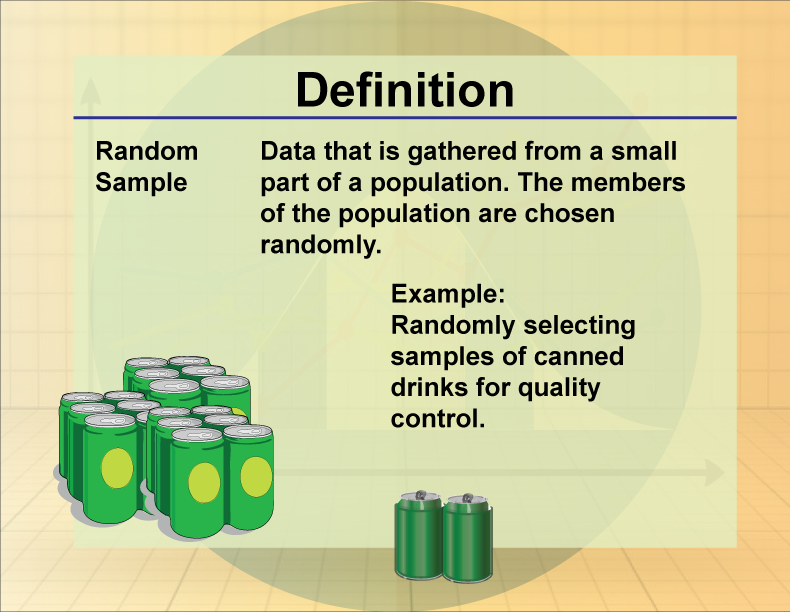
Display Title
Definition--Statistics and Probability Concepts--Random Sample
Display Title
Random Sample

Topic
Statistics and Probability
Definition
A random sample is a subset of individuals chosen from a larger population, selected in such a way that every individual has an equal chance of being chosen.
Description
Random sampling is a critical technique in statistics that helps ensure the representativeness of a sample by minimizing bias. It is widely used in survey research to ensure that the data collected reflects the diversity and characteristics of the entire population.
In practice, random sampling can be applied in various fields such as marketing, where companies want insights from their consumer base without favoring any particular group. Understanding this concept is integral for students in conducting valid statistical analyses and enhancing their research methods.
A strong grasp of random sampling equips students to apply this technique effectively in their own research and interpretation of data.

For a complete collection of terms related to Probability and Statistics click on this link: Probability and Statistics Collection.
| Common Core Standards | CCSS.MATH.CONTENT.6.SP.B.4, CCSS.MATH.CONTENT.6.SP.A.2, CCSS.MATH.CONTENT.HSS.ID.A.1, CCSS.MATH.CONTENT.HSS.ID.A.2, CCSS.MATH.CONTENT.HSS.ID.A.3, CCSS.MATH.CONTENT.HSS.ID.A.4 |
|---|---|
| Grade Range | 6 - 12 |
| Curriculum Nodes |
Algebra • Probability and Data Analysis • Data Gathering |
| Copyright Year | 2020 |
| Keywords | random sample |